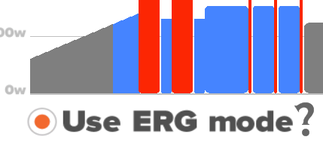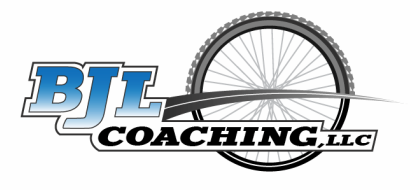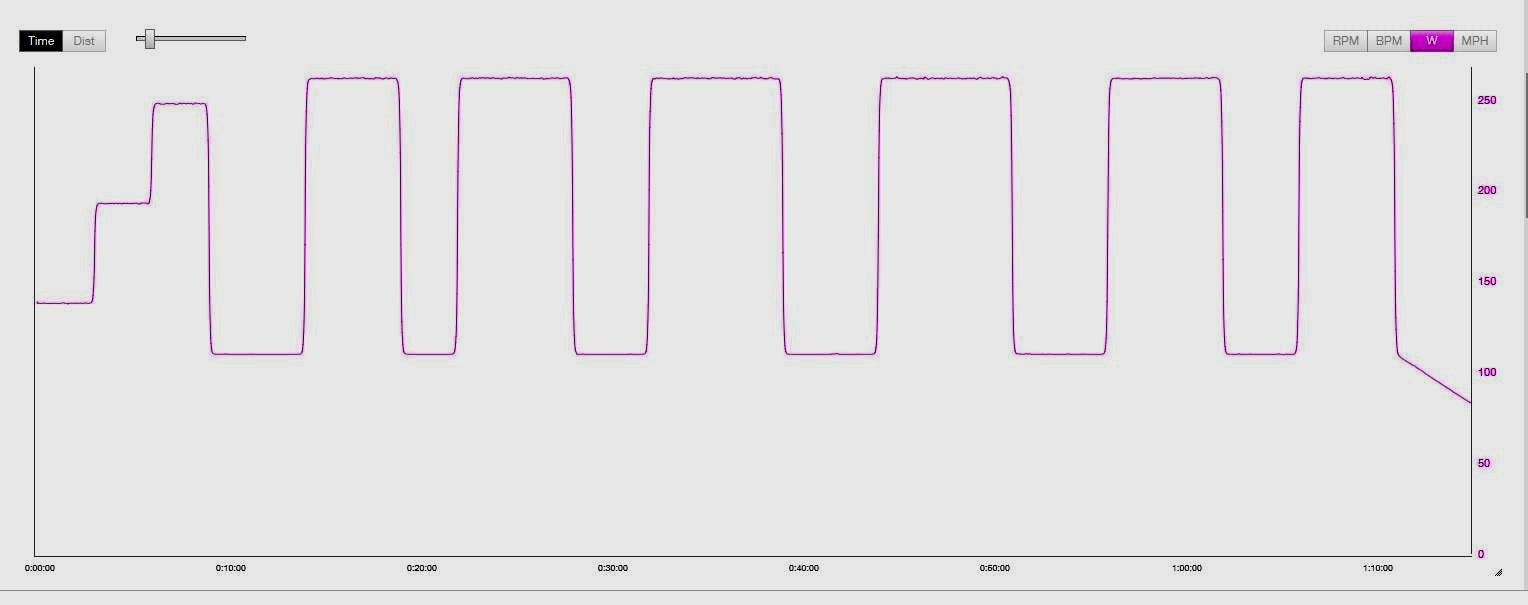 Over the past 6-7 years, more and more athletes that I work use a smart trainer for their indoor cycling, and some of the new athletes that sign on to work with me only have experience with a smart trainer and ERG mode on for indoor workouts. So is this a good thing or bad thing or is it neutral? Like most things, this is not a binary decision of “good” or “bad”, but a continuum. My initial thought was that there’s more bad than good, but I wanted to find out more. Since power (measured in watts) = torque x cadence, as long as the product of those two variables is 200, it doesn’t matter if the cadence is 20 revolutions per minute (rpms) or 120 rpms, as long as the torque changes as well. And what happens with a smart trainer is the rider will HAVE TO change the torque, or the pedals won’t move. Torque is calculated by multiplying the force applied to the pedals, by the crank length (lever arm). This is a very simplified view of the physics involved without going full nerd on you all, but the basic gist is there. What I typically see with ERG ONLY athletes is that they have a difficult time producing a steady power output outside, especially on the flats. They also often don't learn the skill of what xxx watts "feels" like in their feet and legs. This “feel” is very useful when in a group ride or race situation where staring at your power meter is not a good idea. Or if your devices have an issue such as dead battery or bad calibration. For more intense intervals, I have also seen their form really fall apart, in the way of just mashing on the pedals with a very low cadence just to hit the number. I can imagine it might not have been what we would call souplesse, or smooth pedaling like we see with the pro riders. This is not a knock on anyone. It would make sense that “if I’m hitting xxx watts and that’s the goal, then I must be getting a good workout.” Unfortunately, that’s not a binary decision, either. Imagine a personal trainer prescribed squats at yyy pounds for an athlete. The instructions were to complete 8 reps at that weight, at all costs. Form didn’t matter at all, as long as the barbell came down and then back up. If this amount of weight is just beyond the athlete’s safe capabilities, chances are their form would go out the window and they could really injure themselves. But coach…I did the reps? Aren’t I going to get stronger now? Not if you’re laid up hurt. First off, what is ERG mode? ERG is short for ergometer, which, incidentally is not quite how we actually use in the term ERG in respect to a smart trainer. By definition, an ergometer is, according to Merriam-Webster: Ergometer: an apparatus for measuring the work performed (as by a person exercising) So the smart trainer’s ability to measure watts (work), as well as a power meter, would satisfy the definition. When we speak of ERG mode as it relates to a smart trainer, we are usually talking about the smart trainer’s ability to set a predetermined intensity, measured in watts. For example, if the trainer is set to ERG mode ON and the intensity (power) is 200 watts, the rider would need to produce 200 watts. Period. It’s either 200 watts or you’re not going. ERG Mode on for an interval workout. Perfectly executed? An analogy would be a running/walking treadmill. If the treadmill is set for 10 minute miles, a.k.a. 6 miles per hour, an individual on the treadmill would need to move their legs to correspond to this rate. If they ran too slowly, they’d fall off the back. If they ran too quickly, they’d run into the grab bar and controls. The number of steps per minute does matter, but only in the sense that the stride length would need to change correspondingly. Bottom line is, they would need to cover 8.8 feet per second which is 6 miles per hour. OK…enough of the physics and definitions. I had researched the topic of ERG mode when smart trainers started becoming popular and found many similar thoughts such as the article I link to below. There’s been plenty of additional support since I first looked into the topic. I have also experienced that, with the athletes that I coach, as I help them transition them off of ERG mode that they're able to translate that power better to the "real" world. For harder efforts, I believe it's VERY important to have ERG off. The benefit of ERG forcing one to do the wattage and stay steady could be beneficial for lower (Zone 2/Zone 3) workouts, but once we get to Zone 4 and above, the athlete should really listen to their body and hit the "range." ERG may force us to go much harder than would be appropriate for the day, the rep, the set, etc. Additionally, for the really hard efforts above LT2 (commonly referred to as VO2 Max Intervals or Anaerobic Capacity Intervals for example), like many coaches, I prescribe a range. The training platforms such as Zwift or Garmin will target the middle of that range, which could quite possibly be completely inappropriate if not unattainable for the athlete. Better to push the power that hits somewhere in the range and is repeatable for effective training. Likewise, for any drill where there are quick cadence changes such as spin ups, fast pedaling drills, or sprints, the trainer can't always keep up. As important, it forces a specific power, which is often not the goal of the drill. High cadence is the goal and the power may be quite variable. While a high power number is usually an indicator of a strong sprint, true sprint efforts are so short that the power could fluctuate a fair amount from sprint to sprint. In my opinion and anecdotal experience, ideally ERG mode would never be on, with perhaps one exception. What’s the exception? If an athlete has a hard time NOT going hard or needs to chase down everyone that passes them on Zwift, having ERG mode on to keep that rider at a lower intensity could be beneficial. I’ve also had more than one client tell me that they put ERG on so they can “just shut off their brain and pedal.” I can understand and relate to this, but I also think that it’s important to “be there” when you’re training and think about your form, the goal of the workout, your breathing, etc. But if ERG mode on helps folks get through a lower intensity workout, then it could be worth it. Check out this article that is not in support of ERG mode:: https://www.360velo.com/why-dont-use-erg-mode/ And here’s an alternative viewpoint: https://www.bikeradar.com/advice/fitness-and-training/erg-mode/ Hope this sheds some light as to why I recommend not using ERG except for very specific conditions. If you haven’t tried doing workouts outside of ERG, give it a try. What's your take? Have you ever used ERG Mode ON? Are you a die hard ERG Mode fan? Post a comment or question below. Cheers, B.L.
2 Comments
Stuart
1/26/2023 12:27:01 pm
ERG mode is evil :D
Reply
Michael L Labat Jr
1/30/2023 10:46:40 am
Hi Coach -been awhile but i still follow you and thanks for including me in your emails !
Reply
Your comment will be posted after it is approved.
Leave a Reply. |
Categories
All
Coach B.L.Coach B.L. is the head coach at BJL Coaching and an avid racer and cycling enthusiast himself. Archives
July 2024
|


 RSS Feed
RSS Feed